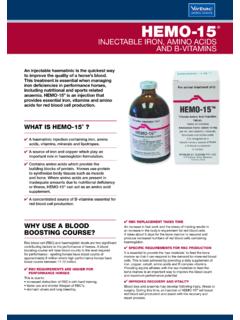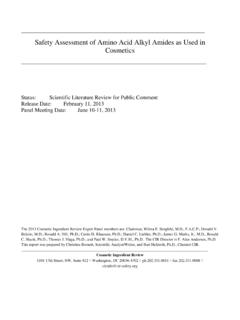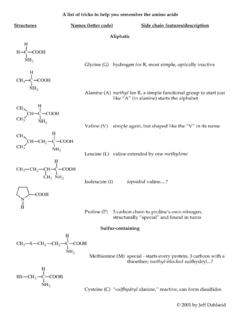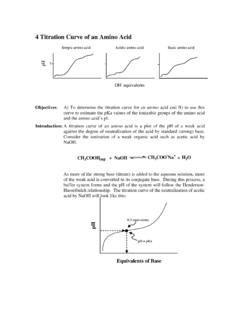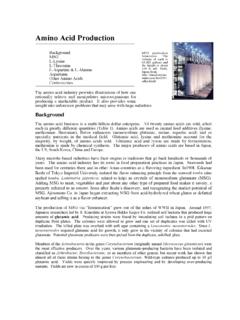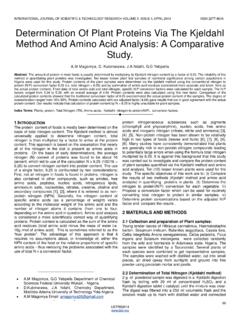Transcription of Name of the Medicine - Baxter Healthcare
1 SYNTHAMIN Product Information name of the Medicine Synthamin ( amino Acid) Intravenous Infusions with Electrolytes and Synthamin ( amino Acid). Intravenous Infusion without Electrolytes. Description Synthamin Intravenous Infusions are sterile, nonpyrogenic, hypertonic, clear and colourless to slightly yellow solutions of essential and non-essential L- amino acids provided with or without electrolytes. Synthamin Intravenous Infusions are available in , 8% and 10% strengths, each in 500 mL units for intravenous administration. Each strength has a pH of approximately and each 500 mL unit contains amino acids and nitrogen in the following quantities: 8% 10%. amino Acids g 40 g 50 g Nitrogen g g g Each 1000 mL of Synthamin Intravenous Infusions without electrolytes contains: 8% 10%. L- amino Acids 55 g 80 g 100 g Total Nitrogen g g g Approximate pH Protein Equivalents g g 103 g Essential amino Acids 8% 10%. L-Leucine g g g L-Phenylalanine g g g L-Methionine g g g L-Lysine (added as the hydrochloride salt) g g g L-Isoleucine g g g L-Valine g g g L-Histidine g g g L-Threonine g g g L-Tryptophan 990 mg g g Nonessential amino Acids 8% 10%.
2 L-Alanine g g g Aminoacetic Acid (L-Glycine) g g g L-Arginine g g g L-Proline g g L-Tyrosine 220 mg 320 mg 400 mg L-Serine g g g Approximately mmol/L sodium metabisulphite is added as stabiliser. Synthamin PI (ccsi42520130305) 13 Feb2014 Page 1 of 10 SYNTHAMIN Product Information In addition to the above, Synthamin Intravenous Infusions with Electrolytes contain in each 1000 mL: Electrolytes 8% 10%. Sodium Acetate, g g g Dibasic Potassium Phosphate g g g Sodium Chloride, g g g Magnesium Chloride, g g g Synthamin Intravenous Infusions with Electrolytes contain the following non-nitrogenous ionic profile. Ions Millimoles/litre 8% 10%. Sodium 73 73 73. Potassium 60 60 60. Magnesium 5 5 5. Acetate* 100 130 150. Chloride 70 62 70. 2. - 30 30 30. Phosphate (as HPO4 ). * Acetate is added as sodium acetate and as acetic acid used for pH adjustment. Synthamin Intravenous Infusions without Electrolytes contain the following anion profile. Ions Millimoles/litre 8% 10%.
3 Acetate * 45 66 82. Chloride + 22 32 40. *. Derived from pH adjustment with acetic acid +. Contributed by the L-Lysine Hydrochloride Hypertonic approx. milliosmoles/litre Synthamin 9 ( ) Intravenous Infusion with Electrolytes 820. Synthamin 9 ( ) Intravenous Infusion without Electrolytes 550. Synthamin 13 (8%) Intravenous Infusion with Electrolytes 1060. Synthamin 13 (8%) Intravenous Infusion without Electrolytes 800. Synthamin 17 (10%) Intravenous Infusion with Electrolytes 1260. Synthamin 17 (10%) Intravenous Infusion without Electrolytes 1000. Synthamin PI (ccsi42520130305) 13 Feb2014 Page 2 of 10 SYNTHAMIN Product Information Pharmacology Synthamin Intravenous Infusions provide a biologically utilisable source material for protein synthesis when administered with adequate calories such as concentrated carbohydrate solutions, vitamins and minerals. This mixture provides (with the exception of essential fatty acids and trace elements) adequate parenteral nutrition.
4 Indications Synthamin Intravenous Infusions are indicated as an adjunct in the prevention of net nitrogen loss or in the treatment of negative nitrogen balance in patients where: (1) the alimentary tract, by the oral, gastrostomy or jejunostomy route, cannot or should not be used, (2) gastrointestinal absorption of protein is impaired, or (3) metabolic requirements for protein are substantially increased, as with extensive burns. Contraindications 1. Patients with renal failure - anuria (for Synthamin Intravenous Infusions with Electrolytes, only). 2. Patients with clinically significant elevation of plasma concentrations of sodium, potassium, magnesium and/or phosphorus (for Synthamin Intravenous Infusions with Electrolytes, only). 3. Patients with severe liver disease - hepatic coma. 4. Patients with a congenital abnormality of amino acid metabolism. 5. Known hypersensitivity to one or more amino acids, any other active or excipient.
5 Precautions 1. Do not administer unless solution is clear. This solution should not be administered simultaneously with blood through the same infusion set because of the possibility of pseudoagglutination. 2. Proper administration of Synthamin Intravenous Infusions requires a knowledge of fluid and electrolyte balance and nutrition, as well as clinical expertise in recognition and treatment of the complications which may occur. Severe water and electrolyte disorders, severe fluid overload states, and severe metabolic disorders should be corrected before starting the infusion. Frequent clinical evaluation and laboratory determinations appropriate to the patient's clinical situation and condition are necessary for proper monitoring during administration. Studies should include blood and urine glucose, serum proteins, kidney and liver function tests, water and serum electrolytes, haemogram and carbon dioxide combining power or content, acid/base balance, serum and urine osmolarities, blood cultures and blood ammonia levels.
6 3. Metabolic complications may occur if the nutrient intake is not adapted to the patient's requirements, or the metabolic capacity of any given dietary component is not accurately assessed. It is essential to provide adequate calories concurrently if parenterally administered amino acids are to be retained by the body and utilised for protein synthesis. Concentrated glucose solutions are an effective source of such calories. Adverse metabolic effects may arise from administration of inadequate or excessive nutrients, or from inappropriate composition of an admixture for a particular patient's needs. Synthamin PI (ccsi42520130305) 13 Feb2014 Page 3 of 10 SYNTHAMIN Product Information 4. With the administration of Synthamin 9 ( ) Intravenous Infusions in combination with highly concentrated glucose solutions, hyperglycaemia, glycosuria and hyperosmolar syndrome may result. Blood and urine glucose should be monitored on a routine basis in patients receiving this therapy.
7 In some patients provision of adequate calories in the form of hypertonic glucose may require the administration of exogenous insulin to prevent hyperglycaemia and glycosuria. 5. Sudden cessation in administration of a concentrated glucose solution may result in insulin reaction due to continued endogenous insulin production. Parenteral nutrition mixtures should be withdrawn slowly. 6. Synthamin Intravenous Infusions with Electrolytes contain sufficient electrolytes for most parenteral nutrition needs with the possible exception of potassium, where supplementation may be required. Primarily, this is dependent on the amount of carbohydrate administered and metabolised by the patient. 7. Replacement of exceptional electrolyte loss due to nasogastric suction, fistula drainage, or unusual tissue exudation may be necessary. All serum electrolytes should be monitored frequently, especially potassium, phosphate, bicarbonate and chloride.
8 Note: Electrolytes may be added to the Synthamin intravenous infusion without electrolytes as dictated by the patient's electrolyte profile. 8. Anaphylactic/anaphylactoid reactions and other hypersensitivity/infusion reactions have been reported with Synthamin Intravenous Infusions administered as a component of parenteral nutrition (see Adverse Events). The infusion must be stopped immediately if any signs or symptoms of a reaction develop. 9. Pulmonary vascular precipitates have been reported in patients receiving parenteral nutrition. In some cases, fatal outcomes have occurred. Excessive addition of calcium and phosphate increases the risk of the formation of calcium phosphate precipitates. Precipitates have been reported even in the absence of phosphate salt in the solution. Precipitation distal to the in-line filter and suspected in vivo precipitate formation has also been reported. Pulmonary vascular precipitates have also been reported with Synthamin Intravenous Infusions (see Adverse Events).
9 If signs of pulmonary distress occur, the infusion should be stopped and medical evaluation initiated. In addition to inspection of the solution, the infusion set and catheter should also periodically be checked for precipitates. 10. Infection and sepsis may occur as a result of the use of intravenous catheters to administer parenteral formulations, poor maintenance of catheters or contaminated solutions (see 2. septic complications, below). Immunosuppression and other factors such as hyperglycaemia, malnutrition and/or their underlying disease state may predispose patients to infectious complications. Careful symptomatic and laboratory monitoring for fever/chills, leukocytosis, technical complications with the access device, and hyperglycaemia can help recognize early infections. 11. Refeeding severely undernourished patients may result in the refeeding syndrome that is characterized by the shift of potassium, phosphorus, and magnesium intracellularly as the patient becomes anabolic.
10 Thiamine deficiency and fluid retention may also develop. Careful monitoring and slowly increasing nutrient intakes while avoiding overfeeding can prevent these complications. Synthamin PI (ccsi42520130305) 13 Feb2014 Page 4 of 10 SYNTHAMIN Product Information 12. Patients on parenteral nutrition may experience hepatic complications (including cholestasis, hepatic steatosis, fibrosis and cirrhosis, possibly leading to hepatic failure, as well as cholecystitis and cholelithiasis), and should be monitored accordingly. The aetiology of these disorders is thought to be multifactorial and may differ between patients. Patients developing abnormal laboratory parameters or other signs of hepatobiliary disorders should be assessed by a clinician knowledgeable in liver diseases in order to identify possible causative and contributory factors, and possible therapeutic and prophylactic interventions. 13. Administration of amino acid solutions to a patient with hepatic insufficiency may result in serum amino acid imbalances, hyperammonaemia, stupor and coma.
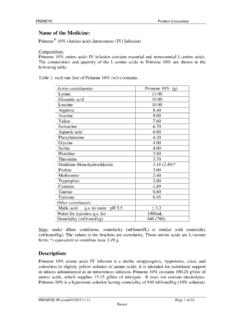
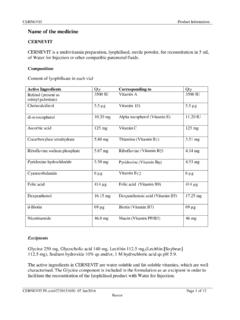
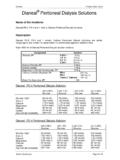
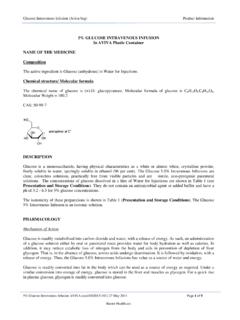
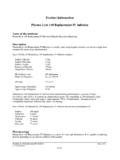
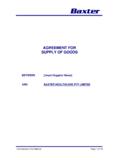
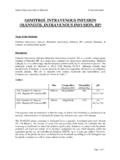
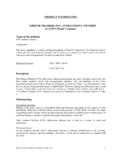
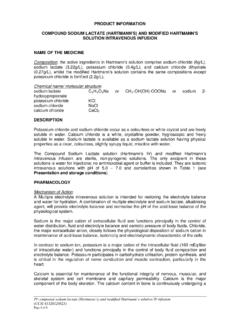
![T I S S E E L [Fibrin Sealant] - Baxter Healthcare](/cache/preview/5/e/c/8/3/b/b/2/thumb-5ec83bb2d349410260af6c556ae67fe3.jpg)
